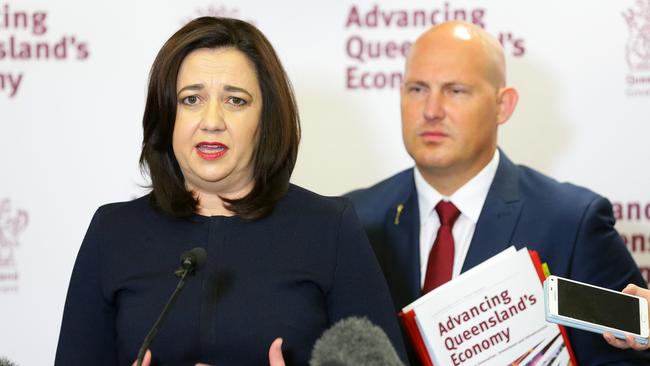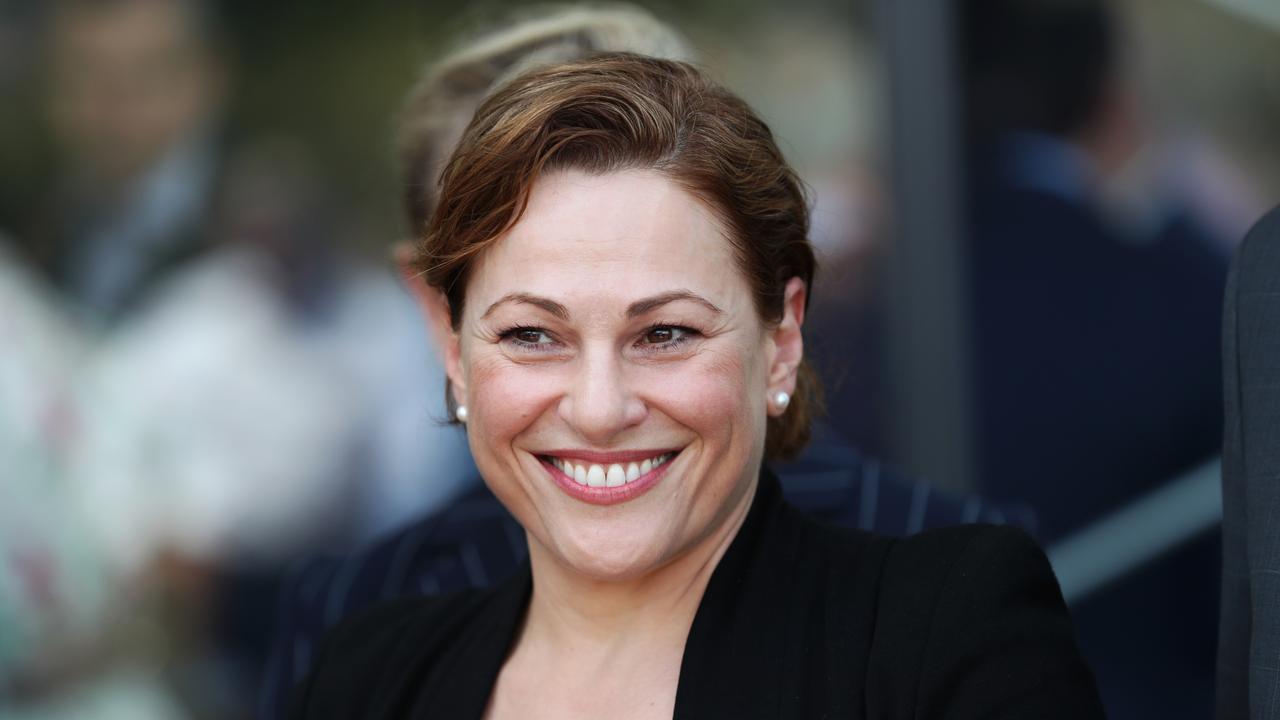Queensland budget 2016: door open for further super raids
Queensland Treasurer Curtis Pitt has left the door open to more raids of extra cash in a public servants’ superannuation fund.

Queensland Treasurer Curtis Pitt has left the door open to more raids of extra cash in a public servants’ superannuation fund, after snatching $4bn to fund infrastructure in the cash-strapped state and pay down its nation-leading debt.
In today’s Queensland Budget, Mr Pitt also launched another hit on the coffers of state-owned businesses, forcing the underperforming companies to hand over surplus cash to the government’s bank accounts. The measure — which comes after last year’s controversial decision to shift billions in government debt to the books of the government-owned corporations — will attempt to reduce general government debt by $750m by 2017-18 to $38bn. But overall government debt — including that of the GOCs — is forecast to hit almost $78bn by 2018-19.
Of the super raid, Mr Pitt said the fully-funded $34bn Defined Benefits Scheme had a surplus of $10bn, from which he’d take $2bn to reduce Queensland’s debt, and $2bn for infrastructure (including $50m on a bureaucracy to deliver the unfunded Cross River Rail project for Brisbane).
But he said the state actuary had advised he could take up to $5bn, leaving open the possibility of future raids. Mr Pitt would not be drawn on what risks the actuary had warned of, promising to table the expert advice in parliament today.
Asked whether the government had enough money to repay the $4bn if the actuary recommended it be returned, Mr Pitt said: “If there was a concern that this (removal of funds) would be a massive shock to the system we would have to look at how we would fund that”.
The fund is worth $34bn and has liabilities of $24bn, meaning all current members of the closed scheme — many of whom are long-serving police and teachers — are guaranteed of receiving their retirement entitlements.
Overall, Mr Pitt revealed a wafer-thin operating surplus of $152m for the Queensland budget for 2015-16, with forecast surpluses for the next four years of nearly $3.2bn in total. The figures represent a rapid deterioration in Queensland’s fiscal position even since the December midyear financial review, when a surplus of $1.213bn was forecast for 2015-16.
“But that is due in no small part to the federal government’s unilateral decision in last month’s federal budget to defer more than $1m in natural disaster funding from the 2015-16 year,” the Treasurer told state parliament.
“Money that belongs to Queensland, but (was) withheld and shifted in what was clearly a political move on the eve of a federal election.”
There’s a forecast surplus of $867m in 2016-17, which Mr Pitt said would be the largest surplus for a decade. That has been slashed from the $1.4bn surplus predicted at the December economic update.
The modest surpluses are against a backdrop of falling revenue; writedowns of $3bn over four years since December and nearly $4.7bn since last year’s budget.
Mr Pitt said he was putting the screws on spending growth, with operations expenses growing at an average of 2.9 per cent over four years, lower than the forecast revenue growth of 3.2 per cent. The Newman government cut government spending growth to record lows of two per cent, after it was allowed to balloon to nine per cent under previous Labor governments.
Yet the ballooning public service is putting pressure on the government’s bottom line. Employee expenses are expected to be $20.9bn in 2015-16, nearly $1bn higher than last year. The bureaucracy grew by 8500 fulltime equivalent workers to 209,999 in 2015-16, more than double what had been budgeted for. It’s forecast to hit 215,087 this financial year.
In an attempt to head off likely attacks at the growth in the public sector, Mr Pitt introduced a new fiscal principle. He promised the public service employee numbers would not exceed population growth on average over the next four years.
All departments must find savings of $450m — but are forbidden from forced redundancies of staff. Health and education have both received record funding ($15.3bn or a 4.3 per cent increase for health and $12.9bn for education, or a 5.9 per cent increase).




